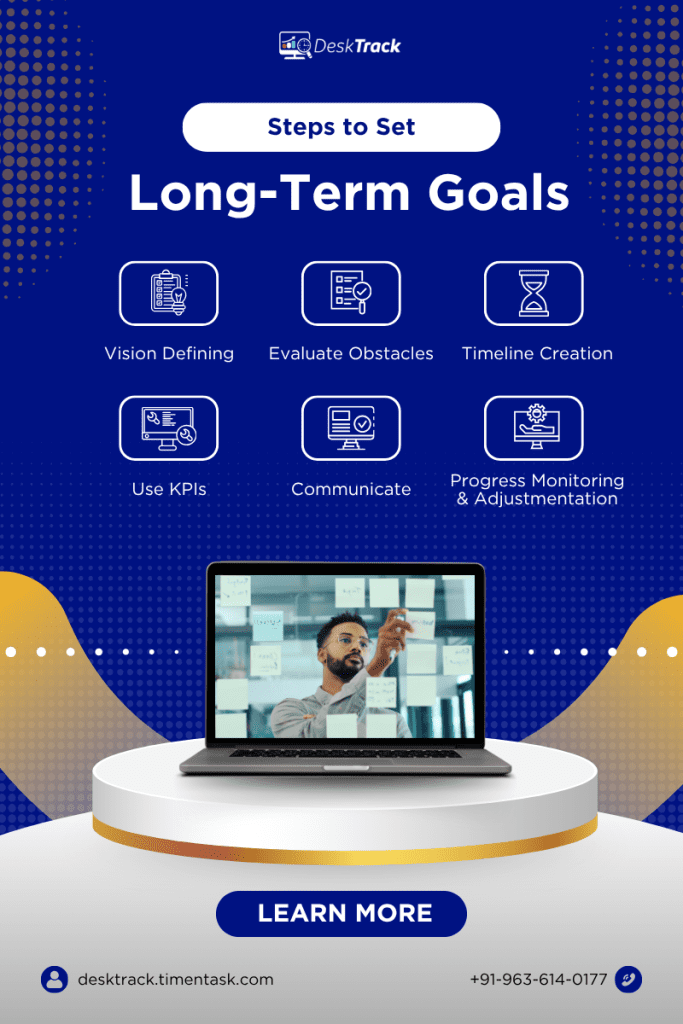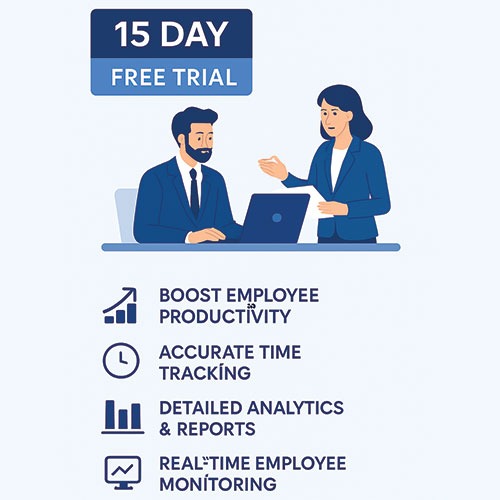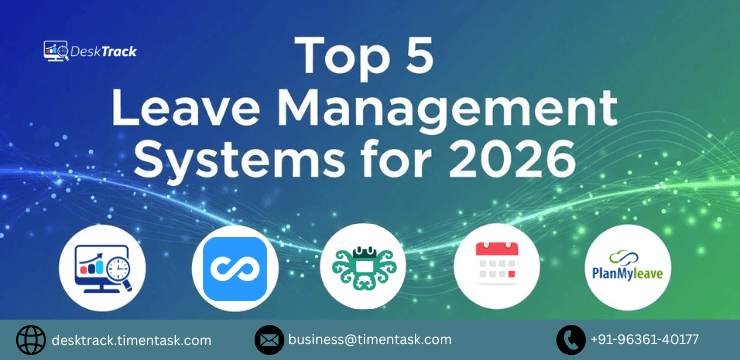
Planning is the most important thing in personal and professional life. It’s the first step without which you won’t reach anywhere. To sum it all up, when you plan for a short goal (s) that you want to achieve now, in a few days, or in a year is short-term planning. On the other hand, when you plan for objectives that you have set to achieve in the distant future, it’s called long-term planning.
Also, all your short-term goals collectively help you bring your big vision to reality. One step at a time. That’s planning in a nutshell for you. However, you need to know more to get started.
What is Short-Term Planning?
When you wish to achieve something within, let’s say, 6 months to a year, go for short-term planning. Since the time frame is shorter, the name is short-term planning. The concern here is immediate priorities, particular targets, and daily operation management. It helps you meet deadlines or respond to market changes by:
- Aligning resources
- Allocating tasks
- Ensuring efficient completion of activities
Read Also: Top 11 HR Software for Your Business in 2025
The Importance of Short-Term Planning

If the major goal is the floor, short-term planning is the first step you need to climb. It provides you with the clarity to wisely use your resources and reach small checkpoints. This planning method:
- Ensures flexibility and adaptability in the rush of things.
- Helps your teams stay flexible and make fast decisions for easy working.
- Simplifies the observation and handling of issues without procrastinating from 9:00 AM to 10:00 AM.
Why is the SMART Approach Secret to Successful Short-Term Planning?
Make your workday more productive
Time tracking and work management can help you reach your goals
faster.
Short-term planning, when done right, gives you a competitive edge. That’s because you can manage the current issues while also foreseeing tomorrow’s wider goals. Since you already know that the focus is to stack up future success via daily, monthly, or quarterly brainstorming to gradually bring the vision to life. On top of that, what if you make this SMART? Here’s an example for more clarity.
- Specific: Concentrating on improving retention via a better onboarding process.
- Measurable: Tracking retention rates using analytical tools.
- Achievable: A realistic 10-20% improvement in retention rate.
- Relevant: Enhancing retention backs up the long-term goals of increasing active users and consumer satisfaction.
- Time-Bound: Achieve the objectives within the next 3 months.
What is Long-Term Planning?
Go for long-term planning if you are set to achieve your objectives within 1-5 years or more. The idea here is to fix issues, meet all requirements, ensure wise resource utilization, and ensure the alignment of business vision and objectives.
The Importance of Long-Term Planning
You need long-term planning to control the direction in which your business goes. As I mentioned before, it’s about setting a future. This strategy focuses on your Fortune 500’s competitive position and challenges, including risks, new suppliers, and products. Overall, it kills 2 birds with one stone by solving your problems and helping you reach your objectives.
Steps to Set Long-Term Goals

You need a system to achieve long-term objectives. Fortunately, I have broken down this structure into 7 simple steps for you.
1. Vision Defining
If you want to bring your idea to reality, you need to have a vision first. It’s important to envision your future and set your priorities straight.
2. Evaluate Obstacles
Bringing your ideas to reality won’t be without any blockers. During both short-term and long-term planning, there will be obstacles. Suppose you want to bring your fast-food franchise to a new city, you will need to add local flavors to your menu. However, this requires a lot of time and careful observation, as one wrong step can give the impression that you are mocking consumer sentiments, which will backfire on you.
3. Timeline Creation
Once you have worked on the vision and obstacles, you will have a fair idea of how much time it will take to reach your goals. Based on this and other factors, such as employee availability, team size, and skills, you need to break down the major goal into small tasks and create a timeline for each one.
4. Use KPIs
Similarly, you also need a measuring scale to identify the efficiency of your employees. Key performance indicators or KPIs are exactly what you need. For example, your sales conversion rate for October.
5. Communicate
The next step is to communicate all the important details to your employees and teams. I would use a transparent communication channel to ensure that even my remote employees don’t miss a single point.
6. Progress Monitoring & Adjustment
So far, it may look like a slow process, but everything happens simultaneously when you are setting goals. Nonetheless, as the work begins, monitoring the progress through employee monitoring software and making necessary adjustments to eliminate obstacles is also crucial.
Applications of Short-Term & Long-Term Planning
Here’s an interesting fact for you. Short-term and long-term planning are both useful in your personal as well as professional life. Don’t believe me? I have got many practical examples below for a clear understanding.
1. Work Life Application
For example, a project manager will set short-term goals for their teams via short-term planning. To reach these objectives, they will involve these things.
- Project requirement discussions with the client.
- Project charter making.
- Project-subdivision into smaller tasks with deadlines.
- Task delegation
- Project progress tracking via DeskTrack
- Project reviewing and completion
On the other hand, this is what’s involved during long-term planning for achieving the major goals.
- Skilled and reliable team-building via training.
- Effective team collaboration and communication implementation.
- Monthly progress meetings.
- Streamlining project management and processes with specialized tools.
2. Personal Life Application
As I mentioned before, planning is also beneficial in personal life. That is, if you do it properly. Here are a few examples of how planning long-term and short-term works when you are chilling at home.
Short-Term Planning:
- Setting the goal to drink 8 glasses of water daily.
- Replacing sugary drinks with water.
- Having water during meals
- Using phone alarms to remind yourself of water intake.
Long-Term Planning:
- Regularly visiting a psychologist
- Keeping a daily diary
- Engaging in physical activities
- Following a consistent sleep schedule
- Maintaining a healthy diet
Key Differences Between Short-Term & Long-Term Planning
So far, so good. Furthermore, to understand planning long-term and short-term, I have tabulated the differences for you.
| Aspect | Short-Term Planning | Long-Term Planning |
| Time frame | A few days to a year | Several years or more |
| Focus | Immediate requirements and objectives | Wider goals and milestones |
| Nature of objectives | Straightforward and particular | Strategic and complex |
| Resource allocation | For immediate tasks | Distributed over a longer duration |
| Risk evaluation | Quick understanding and management | Accounts for long-term uncertainties |
| Flexibility | Allows plan adjustment to respond to changes | More rigid |
| Importance | Foundation for reaching long-term objectives | The secret to fulfilling the main business idea. |
Read Also: Top 10 Best Call Center Monitoring Software
Long-Term Planning in Business
Moving on to the corporate side of long-term planning, the game now gets more tactical and strategic. I will use SWOT and PESTEL analysis here.
1. SWOT Analysis
SWOT expands to strengths, weaknesses, opportunities, and threats. These are the 4 things that you need to analyze to capture the market. As usual, here’s another dummy example.
- Strengths: Skilled AI developers and strong internal infrastructure.
- Weaknesses: Limited marketing expertise and a small AI clientele.
- Opportunities: Growing demands for AI tools in the healthcare and education sectors.
- Threats: Competition from Fortune 500s and rapid technological advancements.
2. PESTEL Analysis
PESTEL analysis goes more towards the more specific side of the aspects you need to capture the market. It expands to political, economic, social, technological, environmental, and legal.
- Political: Stability evaluation of government regulations and markets.
- Economical: Viewing the economic growth, currency exchange rates, and customer purchasing power.
- Social: Examination of cultural attitudes towards technology, digital literacy, and customer behaviors.
- Technological: This involves factors, including the availability of proper infrastructure.
- Environmental: Assessing regulations and public sentiment towards sustainability practices in the sector.
- Legal: Reviewing intellectual property laws, data protection regulations, compliance needs, and the business’s quality control strategies.
Balance Short-Term & Long-Term Planning for Strategic Planning
The business world is the only one where strategic planning comes into use. That’s because corporates use the terms planning and strategizing interchangeably. In short, it involves combining short-term and long-term planning to meet targets.
Simplify Project Planning & Management with DeskTrack
With DeskTrack’s amazing project management, time tracking, employee monitoring, and productivity tracking features, you can plan, organize, monitor, and execute work and processes exactly as you want. With DeskTrack’s real-time data-driven approach, you will be in charge of how work gets divided into workspaces, projects, lists, workflows, tasks, sub-tasks, and checklists. Create projects and track progress in real-time for planned success. Try now and realize why it’s the preferred workforce management software across 100+ countries around the world.
Frequently Asked Questions (FAQ)
Q. What is Short-Term Planning?
Ans. When you wish to achieve something within, let’s say, 6 months to a year, go for short-term planning. Since the time frame is shorter, the name is short-term planning. The concern here is immediate priorities, particular targets, and daily operation management.
Q. What is the Difference Between Short-Term & Long-Term Goal Planning?
Ans. Here’s how these 2 types of planning differ.
- Short-term plans achieve goals within a few days to a year, while long-term goals can take up to several years.
- Short-term plans focus on immediate requirements and objectives. You leave wider goals and milestones to long-term planning.
- The nature of objectives is straightforward and particular in the short term. For the long term, it’s strategic and complex.
- Short-term plans allocate resources for immediate tasks while long-term plans allocate them for a long duration.
- Use short-term planning for a quick understanding and management of risk evaluation. However, to account for long-term uncertainties, make long-term plans.
- While long-term plans are more rigid, short-term ones are more flexible.
- Short-term plans are the foundation for reaching long-term objectives, while the long blueprints are the secret to fulfilling the main business idea.
Q. What is an Example of a Short-Term Plan?
Ans. Here are a few personal life examples of short-term planning.
- Setting the goal to drink 8 glasses of water daily.
- Replacing sugary drinks with water.
- Having water during meals
- Using phone alarms to remind yourself of water intake.
Q. What is Long-Term Planning?
Ans. Go for long-term planning if you are set to achieve your objectives within 1-5 years or more. The idea here is to fix issues, meet all requirements, ensure wise resource utilization, and ensure the alignment of business vision and objectives.
Q. How to Set Long-Term Goals?
You need a system to achieve long-term objectives. Fortunately, I have broken down this structure into 7 simple steps for you.
- Vision Defining
- Evaluate Obstacles
- Timeline Creation
- Use KPIs
- Communicate
- Progress Monitoring & Adjustment





